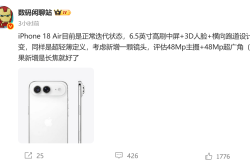Kuaishou's Kuailing's Surge in Popularity: Can Cheng Yixiao Outperform Su Huaqiang?
![]() 12/31 2024
12/31 2024
![]() 530
530

Who would have anticipated that Kuaishou's Kuailing, launched just half a year ago, is already making significant waves in China's film and television industry!
On December 6, a special premiere was held at the China Film Museum, showcasing AI-generated short films created by renowned directors such as Li Shaohua, Jia Zhangke, and Yu Baimei using Kuailing AI. The content spanned various themes, including fantasy, mystery, family, and animation.
Remarkably, Kuailing AI, launched merely six months ago, has already established itself as a thriving AI application both domestically and internationally.
In the fiercely competitive landscape of AI large models, dominated by giants like Baidu, Tencent, ByteDance, and Alibaba, how did Kuaishou, primarily known for its video services, emerge victorious?
1. Impressive User Growth
Last month, Kuaishou announced its third-quarter earnings. The financial report revealed total revenue of 31.1 billion yuan for the reporting period, a year-on-year increase of 11.4%, with adjusted net profit jumping 24.4% to 3.9 billion yuan.
Not only did Kuaishou deliver impressive financial results, but its growth potential is also promising.
Jin Bing, Kuaishou's Chief Financial Officer, highlighted AI as the fourth major growth point, indicating that it will be a key investment area for the company in the coming years. This suggests that Kuaishou is on the brink of a pivotal transition driven by 'AI technology'.
Kuaishou's self-developed video generation large model, Kuailing AI, was released in June this year. Cheng Yixiao, CEO of Kuaishou, revealed that since its launch in June 2024, Kuailing AI has served over 5 million users, with monthly commercial revenue exceeding ten million yuan, and expects substantial growth next year.
During Kuailing's peak internal testing period, there were over a hundred thousand people queuing up domestically, while numerous overseas users pleaded for a 'Chinese account'.
According to Similarweb, an internationally renowned website analysis tool, Kuailing's traffic growth among AI video products launched during the same period was particularly significant. As of September 24, Kuailing's total visits had reached 33.7 million, surpassing the earlier-launched Runway's 31.34 million visits and significantly outpacing Pika's 7.52 million visits.
Behind Kuailing's impressive traffic lies its successful marketing strategy. Many believe that Kuailing has drawn inspiration from Pinduoduo's marketing tactics, particularly in overseas markets where Kuaishou has heavily invested in advertising.
According to 'Silicon Valley AI News', 'Hash Growth' was a driving force behind Kuaishou's expansion into the overseas market for Kuailing, with ads placed on various international media platforms, including X, YouTube, and Newsletter.
Before Kuaishou's significant advertising investment, most of the traffic under the same search term was dominated by Runway, with other competitors barely noticeable.
However, after Kuaishou's substantial investment, Kuailing's search volume soared, constantly eroding Runway's traffic and bringing it into the spotlight.
Currently, Kuaishou's cost per click (CPC) for paid search has reached the industry's top level. According to Similarweb data, the CPC for Runway-related search terms ranges from $0.38 to $0.65, while Kuailing's CPC is $0.46 to $0.68. Additionally, Similarweb estimates that Kuailing's overseas advertising expenses amounted to approximately $332,000 (about 2.324 million yuan) over three months. In comparison, Pika, a startup company during the same period, only spent one-ninth of that, totaling $255,000.
Apart from investing heavily in advertising, Kuaishou also attracts new users through low-price promotions. New users receive 66 inspiration points, a gold membership for 66 yuan per month with continuous subscription, and a diamond membership for 666 yuan per month with continuous subscription.
Under Kuaishou's aggressive marketing onslaught, Kuailing has dominated the AI market.
However, many are concerned that such intense price competition may backfire. Kuaishou still needs time to prove to the market whether large models and AI can significantly impact its next quarterly financial report.
2. Kuailing's Rise and Dominance in the Short Video Market
Undoubtedly, ByteDance has emerged as the clear leader in the short video market. However, with Kuailing, Kuaishou has leveraged AI's powerful capabilities to enhance both content production and user experience, stealing the spotlight from ByteDance.
Prior to Kuailing's emergence, Kuaishou had also dabbled in AI, but its approach was relatively conservative, mainly amplifying existing content production, understanding, and recommendation capabilities to serve existing scenarios and business ecosystems, with its service center still focused on Kuaishou's current business.
While Kuailing is also built upon existing businesses, it places greater emphasis on upgrades, fostering a positive cycle of R&D investment and focusing on the development of products akin to 'Sora'.
In the field of products similar to 'Sora', although applications like Runway, Pika, Jimeng, and PixVerse already exist, the market has not yet formed a monopoly due to the decentralized nature of AI-generated video capabilities.
Kuaishou's large model team capitalized on this market gap by developing a 3D spatio-temporal joint attention module and a 3D VAE network, successfully entering the niche of 'physical logic generation', enabling better spatio-temporal motion modeling and more efficient latent space encoding/decoding.
Kuailing had undergone ten upgrades by the time of its launch.
Meanwhile, Kuaishou places great importance on cultivating a pool of high-quality AI creators.
Although Kuailing did not engage in large-scale advertising, before its market launch, Kuaishou sent private messages to many AI bloggers. If their AI works performed well, they would be invited to the creator community and receive long-term traffic support.
This means that once high-quality creators produce excellent works, they will not only reach a wider audience but also attract more talented AI creators to join, fostering a positive cycle of user growth.
Therefore, Kuailing organized creator incentive activities to consciously guide more people to participate and produce high-quality works.
To tap into the enormous potential of new content forms such as short dramas, Kuaishou is actively exploring the integration of AI technology into every aspect of short drama creation, aiming to create a fully transparent system from content conception to creation, monetization, and distribution. This initiative aims to ignite creators' passion and creativity.
Furthermore, Kuaishou is leveraging this opportunity to build a brand-new content ecosystem, intending to carve out a unique niche in the fiercely competitive market.
In early July 2024, at the World Artificial Intelligence Conference, Kuailing officially announced the launch of the first 'Kuailing AI and Kuaying Video Creation Contest' and introduced a creator nurturing plan called 'Kuailing AI Joins Xingmang Short Dramas'.
In mid-July, Kuaishou premiered its first AIGC original fantasy micro-drama, 'Mountain and Sea Mirror of Braving the Waves'. Previously, constrained by the high cost and long production cycle of CG special effects, the fantasy and science fiction genres have seen only modest development in traditional film and television. However, with the incorporation of AI, the creative process for fantasy short dramas has become highly efficient.
With Kuaishou's series of strong assists, Kuailing's popularity has surged, bringing more possibilities to AI creation.
3. Kuailing's Uncertain Future
Despite the immense attention Kuailing has garnered in a short period, whether it can continuously attract users and truly establish itself in the market remains uncertain.
From a business perspective, Kuailing currently focuses primarily on attracting C-end users, i.e., end-consumers. Compared to text-to-image and text-to-text models that have been widely applied in advertising and other fields, the video generation large model represented by Kuailing has more limited application scenarios.
Therefore, its strategy is to first serve content creators, gradually expanding its application scope on the consumer side, with the ultimate goal of attracting businesses and merchants to pay for the technology, hoping to draw more B-end users into the market.
From a technical standpoint, due to its earlier launch, Kuailing possesses a scarcity of technology, capable of generating 2-minute videos at 30fps with a resolution of up to 1080p, supporting multiple aspect ratios.
It can be said that Kuailing is more mature in terms of both resolution and maximum generation duration.
However, Kuailing is not complacent, as other competitors are rapidly catching up.
In the domestic market, ByteDance's Jianying has launched Jimeng, which also features a large model capable of converting text into video, although some functions are still under optimization. Moreover, sources indicate that higher-quality video content generated by the software is currently under internal testing.
In September, ByteDance's Volcano Engine AI held an innovation tour in Shenzhen and released video models including PixelDance (text-to-video) and Seaweed (text-to-video).
In the international market, Luma AI launched its video generation model, Dream Machine, in June. Users can generate high-quality HD videos through text or images. Moreover, unlike Kuaishou's Kuailing, Luma has achieved full and free access, allowing users to log in and use it immediately without the need for reservations.
According to a research report published by China Merchants Securities, overseas YouTube bloggers compared Conch AI, Runway, and Kuaishou's Kuailing. In terms of generating motion effects, Conch AI demonstrated a significant lead, particularly in the fluidity and realism of human movements, surpassing competitors including Runway and Luma AI.
Apart from fierce competition from industry rivals like Luma AI, Kuailing is also constrained by computing power bottlenecks, facing issues such as insufficient computing power and long waiting times, which increases the uncertainty of content production failures.
Previously, public data in the large model industry indicated that achieving a level similar to Sora requires computing power on the scale of thousands of cards, while further optimization necessitates computing power on the scale of tens of thousands of cards. Therefore, to achieve large-scale computing power cluster mobilization, hardware support is also crucial.
Currently, the development of large models is still in its infancy, and temporary success does not represent a true victory. Especially as the text-to-video field becomes increasingly competitive, Kuaishou faces greater pressure, and its prospects may become even more uncertain.
Therefore, if Kuailing aims to solidify its position as the top domestic Sora, it should carefully consider how to leverage its strengths; otherwise, it may find itself starting early but finishing late.








